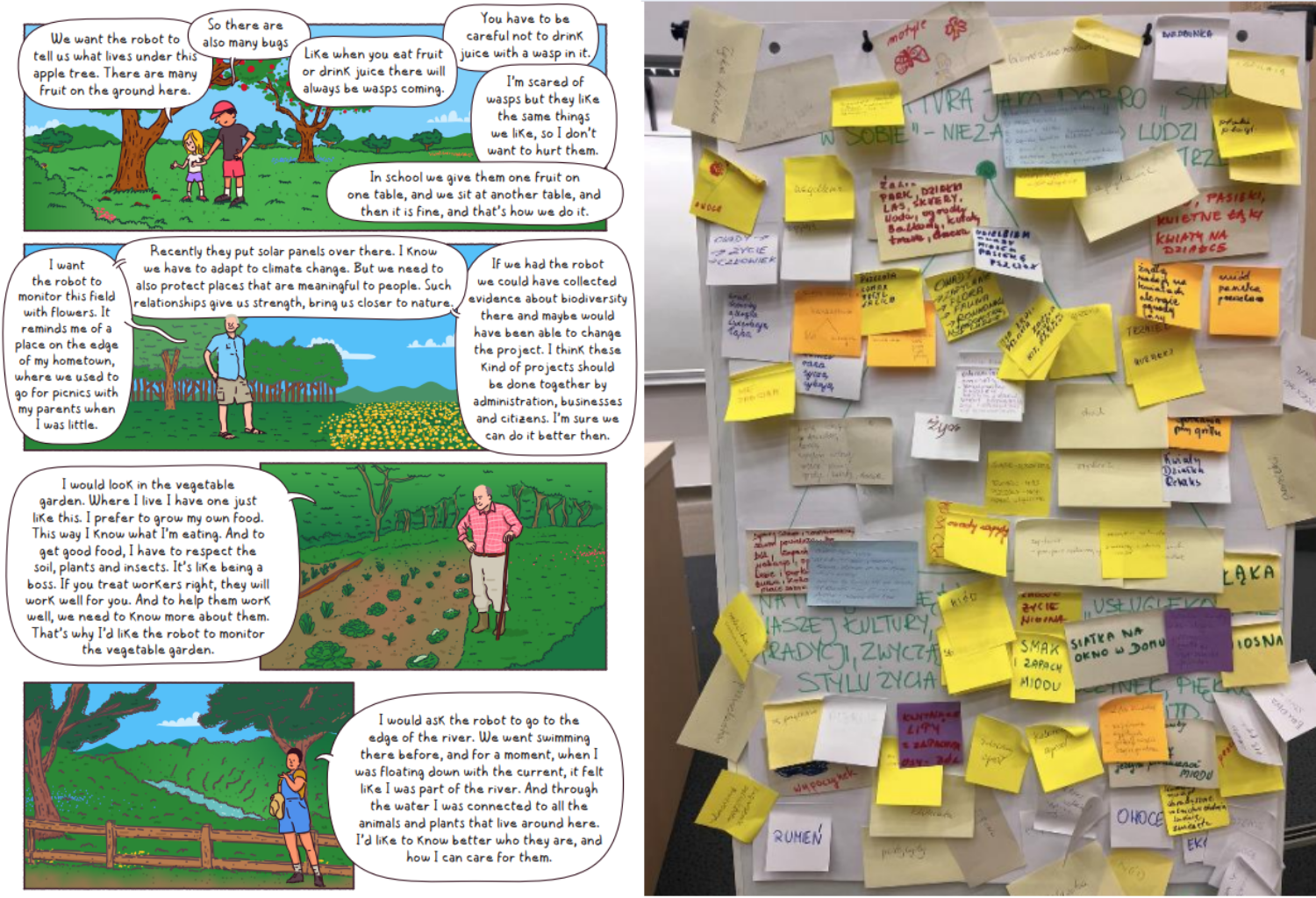Mapping values
Basic Info
Mapping values

Why do we care about pollinators? The first answer that usually comes to mind is that we depend on them for food production. But this ‘egoistic’ motivation is not the only one. Ethicists, artists and activists have been long speaking about respect for animals or the relationships we develop with them. These three attitudes relate to, respectively, instrumental, intrinsic and relational values. While this might sound very theoretical, values are something that shapes our everyday lives. When we grow and kill animals for food in though factory farming, we only have our interests in mind, treating animals instrumentally. When we decide to abandon an industrial project because it would destroy a habitat of an endangered species, we are motivated by a respect for the intrinsic value of the species. An affection we feel towards our pets is an example of relational values.
Through this activity you can explore the way values – and their combinations - play a role in shaping our interactions with pollinators, their habitats and other living beings connected to these. This is especially important for developing new projects as different values can motivate very different actions – some of which might be in tension or outright conflict. Thus, to understand better the underlying motivations can help us address these tensions outright.
Stage: Sense-making
Format: In person, Online, Hybrid
Work Modality: Large groups, Plenary
Location: Indoor
Duration: 90mins
Topic(s): Pollinators
Preparations
Tools
Tools: Post-its, Pens, crayons etc..., Poster template
Comments on Tools
During the activity different colours of post-its can be given different meanings. If you’re discussing actions, you can distinguish between the individual ones, those carried by public institutions and the private ones, to understand the distribution of values between these.
Team
Team: Facilitator / moderator, Note taker, Scientific expert (e.g., entomologist)
Comments on Team
The facilitator must be able to make people comfortable exploring personal stories and their underlying assumptions, wich sometimes can be difficult. Unlike in the other activities on pollinators, the expert for this activity should have knowledge of ethics to explore further the meanings of different values.
Process
Start the activity from collecting different stories. You can take them from previous activities (see Compatibility below) or make storytelling the first stage of this one. Divide the group into pairs and invite participants to share with each other encounters and interactions they had with pollinators – or nature more generally. They don’t have to limit this to personal stories, but can include also anecdotes, things they heard from others or read in the news, things they’d like to do. When one person finishes telling their story, the couple proceeds to exploring the deeper motivations playing a role in this activity. The listener asks ‘why’ questions: Why did you do it? Why was it important? etc., until the storyteller can’t find any more reasons. Jot down on post-its the main insights from the exchange. The pair then switches the roles. This part of the activity is loosely based on Nine Whys activity from Liberating Structures. When everyone has finished, bring the group together. Explain in depth the meaning of different values and introduce the canvas. It will likely be easy to understand instrumental value, but the intrinsic and relational values might sound like ‘philosophising’. Use examples to articulate their meaning and show their presence in the daily life – the examples using human interactions can be easiest to understand. Make sure participants can ask clarification questions. Then invite participants to revisit their stories. Looking at the insights they gained, what kind of values do they see reflected in their stories? Where would they put these on the canvas? Invite them to put short descriptions on the post-its and put these on the canvas. When everyone is done, invite the group to explore tensions between different positions. One of the beauties of this template is that it is not binary, and so it avoids making us think about values in terms of right-wring, good-bad. Rather, by creating a space between three points, it helps explore the diversity in the way we approach pollinators, mixing different concerns and motivations – rather than forcing things into neat categories.
Compatibility
Stories – whether personal ones or those we tell about events in the world – are usually filled with values. Most often they are not explicitly stated, but they underlie actions, opinions, impressions, motives. Consequently, by digging deep into stories, you can unearth a lot of values. Run this activity following the Meaningful Connection to map out what kind of values our personal connections to pollinators relate to or Noticing Stories to understand better the general breath of values in the public discussion.One part of Pollinator Park – Miro’s Meadow – is a great way to introduce the meaning of relational values. This might be particularly useful to run in relation to development of concrete projects and seeking synergies between these and already existing ones. In this case the activity should be run after the initial project ideas were developed. The first part of this activity should then involve not a discussion of stories but of projects that are out there and of their underlying ethical rationales.